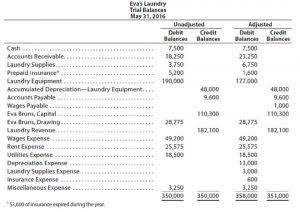Content

The percentage change is calculated by first dividing the dollar change between the comparison year and the base year by the line item value in the base year, then multiplying the quotient by 100. Avertical analysisis used to show the relative sizes of the different accounts on a financial statement. For example, when avertical analysisis done on an income statement, it will show the top-line sales number as 100%, and every other account will show as a percentage of the total sales number. Horizontal analysis, also known as trend analysis, is used to spot financial trends over a specific number of accounting periods.

Because this analysis tells these business owners where they stand in their financial environment. Calculate the absolute change by deducting amount of base year from the amount of comparing year. Such an analysis does not vigilantly follow accounting concepts and conventions. ‘ FP&A solution is an advanced financial planning and analysis software for Excel users who wish to benefit from financial automation. DataRails’ FP&A solution replaces spreadsheets with real-time data and integrates fragmented workbooks and data sources into one centralized location.
More In ‘business’
In this case, the higher the ratio, the better the business is using Inventory. Because they are turning over their Inventory without the cost of it becoming obsolete. Vertical analysis is particularly useful when used as part of a ratio trend analysis to identify relative changes over a period of time. Vertical analysis expresses each item in a financial statement into a percentage of a base figure. Using this method of analysis, an analyst will choose the entries in financial statements from one period to act as a baseline and then present those in other years as changes from that baseline. It does not help take a firm decision owing to a lack of standard percentage or ratio regarding the components in the balance sheet and income statement. Horizontal analysis considers all amount in financial statements in many years.
- The percentages on a common-size balance sheet allow you to compare a small company’s balance sheets to that of a very large company’s balance sheet.
- Horizontal analysis can be presented as absolute values or on a percentage basis.
- For the income statement, the items of the statement are divided by revenue.
- Horizontal analysis is the comparison of historical financial information over various reporting periods.
- To make the best use of your financial data, you need a robust toolkit with plenty of options for slicing and dicing information in meaningful ways.
- This can be paired with horizontal analysis to help you recognise trends and maximise profits through efficient, data-based strategies.
- External users will be most interested in return on investment ratio to determine whether it would be fruitful if they invest in the company.
Assume that ABC reported a net income of $15 million in the base year, and total earnings of $65 million were retained. The company reported a net income of $25 million and retained total earnings of $67 million in the current year. By using horizontal analysis, we can now clearly see that Google’s revenue, gross profit, and EBITDA grew faster than Apple’s in every year except for 2015 , with 2016 looking particularly rough for Apple. Vertical horizontal and vertical analysis analysis expresses each amount on a financial statement as a percentage of another amount. Horizontal analysis can be manipulated to make the current period look better if specific historical periods of poor performance are chosen as a comparison. Also, external users will be interested in debt service coverage ratio. Basically, they will be keen to know if the business has enough income to meet the annual interest and principal payments.
Difference Between 401k And Annuity With Table
The company has never paid dividends on its common stock and has no plans for a dividend. World’s leading management consulting firms, where bold thinking, inspired people and a passion for results come together for extraordinary impact. Horizontal is helpful for shareholders to check their performance and also to improve their weak areas. Or investigate to see if this situation is a coincidence based on other factors. The ability to spot this trend over time empowers you to intervene and be pro-active in solving the problem. The search for answers to these questions begins with an analysis of the firm’s Financial Statements. Regardless of the budgeting approach your organization adopts, it requires big data to ensure accuracy, timely execution, and of course, monitoring.
Vertical analysis, also called common-size analysis, focuses on the relative size of different line items so that you can easily compare the income statements and balance sheets of different-sized companies. The concepts of horizontal and vertical analysis have been primary contributing tools for the expansion of businesses for the past many years.

A common-size income statement allows you to compare your company’s income statement to another company’s or to the industry average. A vertical analysis, on the other hand, involves analyzing every line on a financial statement as a percentage of another line. On an income statement, in other words, one could conduct a vertical analysis by converting each line on the statement into a percentage of your gross revenue.
Analyzing Financial Statements
For instance, on the Income Statement, all the accounts are expressed as a percentage of sales . The horizontal analysis considers all the amounts in financial statements over many years while vertical analysis takes into account the amounts present in the financial statements separately as a percentage of the total. Vertical analysis is conducted by financial professionals to make gathering and assessment of data more manageable, by using percentages to perform business analytics and comparison. Vertical analysis is a way of analysing financial statements which list each item as a percentage of a base figure within the statement of the current year. The horizontal analysis is conducted by finance professionals within a company or business in order to help evaluate the trend of an item over the past consecutive many years. In horizontal analysis, all the amounts in financial statements over many years taken into perspective and consider it the percentage of the complete statement.
Horizontal analysis refers to the comparison of financial information such as net income or cost of goods sold between two financial quarters including quarters, months or years. Also referred to as trend analysis, this is the comparison of financial information such as net income or cost of goods sold between two financial quarters https://www.bookstime.com/ including quarters, months or years. Often expressed in percentages or monetary terms, it provides insights into factors that significantly affect the profitability of an organization. For instance, in the year 2015, organization A had 4 million turnover as compared to year the 2014 whereby the turnover was 2 million.
Horizontal analysis uses a line-by-line comparison to compare the totals. For example, if you run a comparative income statement for 2018 and 2019, horizontal analysis allows you to compare revenue totals for both years to see if it increased, decreased, or remained relatively stagnant. Horizontal analysis is a process used to analyzed financial statements by comparing the specific financial information for a particular accounting period with information from another period. The issue with only performing horizontal analysis is that it presents one line item as it pertains to itself. Therefore, it is important to see the total picture by combining horizontal and vertical analysis. By doing this analysis get an idea of how line items compare to themselves over time and whether those changes make sense in the context of the current time period as well. Ratios are expressions of logical relationships between items in the financial statements from a single period.
Overview: What Is Horizontal Analysis?
Horizontal analysis looks at amounts on the financial statements over the past years. For example, the amount of cash reported on the balance sheet at December 31 of 2006, 2005, 2004, 2003, and 2002 will be expressed as a percentage of the December 31, 2002 amount. This shows that the amount of cash at the end of 2006 is 134% of the amount it was at the end of 2002.
Before you can perform a vertical analysis of a balance sheet, you first need a completed balance sheet.Express Accounts as a Percentage. To conduct a vertical analysis of a balance sheet, express each individual asset account line item as a percentage of total assets.Compare Financial Data.Vertical Analysis Interpretation. The restated financial statement is known as common size financial statement.
As a result, some companies maneuver the growth and profitability trends reported in their financial horizontal analysis report using a combination of methods to break down business segments. Regardless, accounting changes and one-off events can be used to correct such an anomaly and enhance horizontal analysis accuracy. Both horizontal and vertical analysis hold their own place in financial statements analysis. While each has its distinct advantages and disadvantages, they are often used together to give a more comprehensive comparative picture to stakeholders. They, together, are key to understanding the financial position of a business entity. The article horizontal vs vertical analysis looks at meaning of and differences between two ways of analyzing financial statements – horizontal analysis and vertical analysis.
Key Differences Between Horizontal And Vertical Analysis
This analysis can also be used to compare a business’s financial statements to the average trends taking place in the industry. Using dollars amounts would not work very well when analyzing an entire industry. But, using common-size percentages can be effective for this purpose, thus allowing for industry comparison.
Most commonly, this will take the form of percentage changes from the base year. The analysis of the different items in income statement is also done following the similar procedure. Providing students with an overview of financial statements using the Dupont analysis approach. Finally, this technique involves preparation of Comparative Balance Sheet and Comparative Income Statement so as to highlight the changes in the various assets, liabilities, income and expenditure. In the Comparative Balance Sheet, the figures of assets and liabilities are set out as at the beginning and at the June of the year along with the extent of increases or decreases between the two dates.
Interest Coverage Ratio is a financial ratio that is used to determine the ability of a company to pay the interest on its outstanding debt. The method also enables the analysis of relative changes in different product lines and projections into the future. By setting a poor performance year as the base year, the comparative performance of other years can be artificially heightened which can mislead stakeholders. Trends in gross margin generally reveal how much pricing power a company has. The more periods you have to compare, the more robust your data set will be, and the more useful the insights gathered.
Differences Between Horizontal And Vertical Analysis
For example, earnings per share may have been rising because the cost of goods sold has been falling or because sales have been growing steadily. Coverage ratios, like the cash flow-to-debt ratio and the interest coverage ratio, can reveal how well a company can service its debt through sufficient liquidity and whether that ability is increasing or decreasing. Horizontal analysis also makes it easier to compare growth rates and profitability among multiple companies in the same industry. Vertical analysis is the proportional analysis of a financial statement, where each line item on the statement is listed as a percentage of another item. This means that every line item on an income statement is stated as a percentage of gross sales, while every line item on a balance sheet is stated as a percentage of total assets.
What Is The Difference Between Vertical Analysis And Horizontal Analysis?
Vertical analysis is a financial statement analysis tool that presents each line item in the financial statement as a percentage of a decided base item in the financial statement. After squaring the differences and adding them up, then dividing by the total number of items, we find that the variance is $5,633,400. Taking the square root of that, we get the standard deviation, which is $750,600. This method is particularly useful for both internal analysis to identify areas of growth and external analysis by investors or lenders who want to see demonstrable growth before committing their resources to your business. Variance, which is useful in establishing positive or negative changes between periods based on comparison to the average of the squared difference from the mean for the total time measured. She is an expert in personal finance and taxes, and earned her Master of Science in Accounting at University of Central Florida. The notion behind the extraordinary-items accounting treatment is to prevent “once-in-a-lifetime” events from skewing a company’s regular earnings.
As an example, Company X has $10 million in gross sales with a cost of goods sold of $2 million. Let us understand this analysis with the help of the following balance sheet. Thus, it will be best not to use vertical analysis as a tool to get an answer, but use it to figure out what questions one may ask. For many entrepreneurs, outsourcing the preparation of current payroll accounting to a service…
Financial statement analysis, also known as financial analysis, is the process of understanding the risk and profitability of a company through the analysis of that company’s reported financial information. This information includes annual and quarterly reports, such as income statements, balance sheets, and statements of cash flows. With the help of vertical analysis, the percentages may be directly compared to the result of the equivalent percentages of the past years or other companies functioning in the same industry regardless of their size. Therefore, common size financial statement not only helps in intra-firm comparison but it also helps in inter-firm comparison. The rise and fall of a trend concerning an item are recorded, and based on that a plan of action is taken to decide how to help the item grow in popularity and grab the interest of the company. The horizontal analysis can be used to assess balance sheets, retained earnings statements, fixed assets and income statements. The primary difference between vertical analysis and horizontal analysis is that vertical analysis is focused on the relationships between the numbers in a single reporting period, or one moment in time.
Horizontal analysis can be used with an income statement or a balance sheet. Horizontal analysis trend percentage can be found by finding the balance sheet, income statement and cash flow statement by the scheduling of current and fixed assets and statement of retained earnings. Moreover, it also helps in comparing the numbers of a company between different time periods , be it quarterly, half-yearly, or annually. For instance, by expressing several expenses in the income statement as a percentage of sales, one can analyze if the profitability is improving. Ratios are expressions of logical relationships between items in financial statements from a single period. It is possible to calculate a number of ratios from the same set of financial statements. A ratio can show a relationship between two items on the same financial statement or between two items on different financial statements (e.g.balance sheet and income statement).
To illustrate horizontal analysis, let’s assume that a base year is five years earlier. All of the amounts on the balance sheets and the income statements will be expressed as a percentage of the base year amounts. The amounts from five years earlier are presented as 100% or simply 100. The amounts from the most recent years will be divided by the base year amounts. For instance, if a most recent year amount was three times as large as the base year, the most recent year will be presented as 300. If the previous year’s amount was twice the amount of the base year, it will be presented as 200. Seeing the horizontal analysis of every item allows you to more easily see the trends.
Horizontal analysis allows for a finance professional to analyse all the amounts in a financial statement that have been accumulated over the previous two or more periods since the company have conducted business. It helps show the relative sizes of the accounts present within the financial statement. This can also help compare the companies present within the industry with the company performing the vertical analysis. Financial statements should be prepared in a standard vertical format in accordance with accounting standards. The main use of vertical analysis is to calculate the financial ratios which in turn are key metrics in evaluating company performance. Once the ratios are calculated, they can be easily compared with ratios in similar companies for benchmarking purpose.
While horizontal analysis is useful in income statements, balance sheets, and retained earnings statements, vertical analysis is useful in the analysis of income tax, sales figures and operating costs. The above is done on balance sheets, retained earnings statements, fixed assets and income statements, and each line within these are considered separately as a percentage of the complete statement. But, when talking about the income statement, the vertical analysis indicates the amount as the percentage of gross sales.

Bir Yorum Yaz